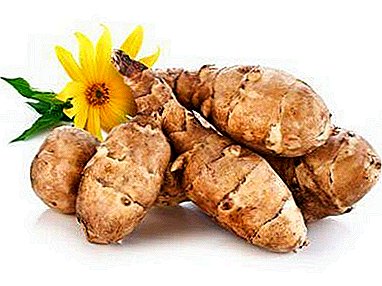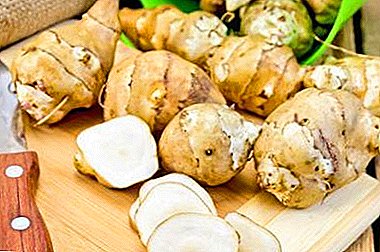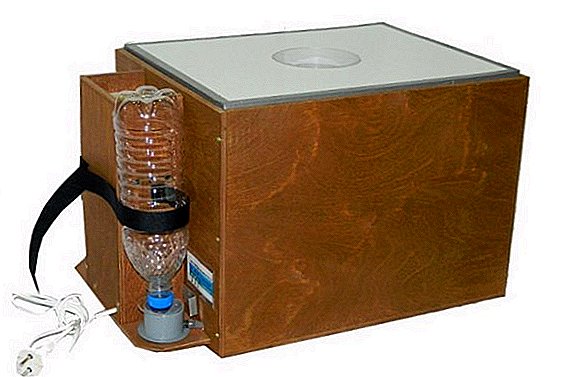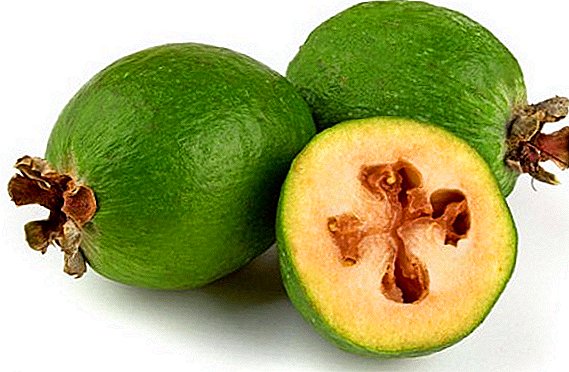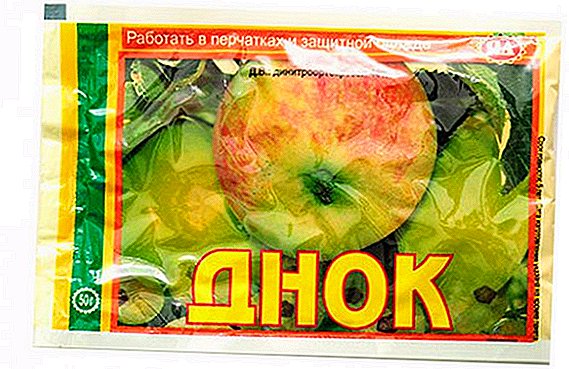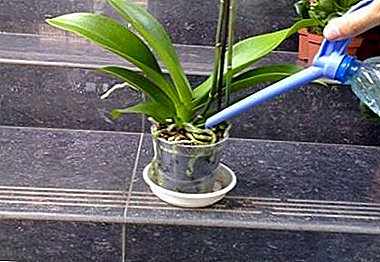
A popular houseplant called "orchid" is necessary to ensure proper care in order to achieve lush and long flowering. One of the most important procedures for keeping an orchid at home is watering, which should be as competent as possible. Improper soil moisture in a short time can lead to a flower to death.
Main principle
Orchid is very different from other flowers, as it is an epiphyte. This means that in natural conditions the flower grows on the trunks of trees, and does not develop in the soil. The root system does not come into contact with the earth, but extracts nutrients from the surrounding space. In nature, rain is the only source of moisture for an orchid.
The roots are not for a long time in a humid environment. Based on this important feature, we can formulate the main principle of watering orchids in pots: you can not leave the plants for a long time in the water and filltherefore, it is not necessary to plant orchids in ordinary land, they require a special substrate.
Basic rules for beginners
 A huge role is played by the frequency of watering. It is impossible to name specific periods of time that must be observed when watering, because it depends on the speed of drying of the substrate, which is influenced by many factors: ambient temperature, total humidity, amount of light.
A huge role is played by the frequency of watering. It is impossible to name specific periods of time that must be observed when watering, because it depends on the speed of drying of the substrate, which is influenced by many factors: ambient temperature, total humidity, amount of light.Regular watering is done after the substrate is completely dry. The roots of a plant can also help determine the need for moistening: when they are saturated with moisture, they acquire a bright green tint. The silver root system signals that it has dried and can be watered.
- Watering liquid should be close in composition to rainwater, since it is sediments that provide the orchid with moisture in nature. Flower moistened with water at room temperature, it is necessary that it was soft.
Reference! Determine the degree of rigidity of the liquid from the tap can be on the kettle: if it remains a lot of scale, it means that the rigidity indicators are high. This figure is reduced by using oxalic acid.
A solution is prepared the day before watering: add half a teaspoon of the product to 2.5 liters of water. Immediately before the irrigation process, water is filtered so that the sediment does not get into the ground to orchids. Cold hard water causes the root system to die quickly.
- The ideal time for watering is the morning hours.
- The root system should not be in contact with water for more than thirty minutes. After the procedure, all excess fluid should be removed from the pan.
- You can not fill the core of the orchid, as well as to prevent the ingress of water droplets on the inflorescences. Otherwise, spots will appear on the petals, which will lead to rapid wilting.
More information about the rules for watering orchids at home is described here.
A photo
Below is a photo of watering flowers growing in pots:




How to moisturize the plants?
The irrigation procedure depends on the nature of the container in which the orchid grows.
In a conventional or transparent container
The optimal container for growing orchids is a transparent pot with drainage holes. A plant in such a pot can be watered in several ways.
- The most popular is the immersion method.
- Container with orchid gently and slowly immersed in a bowl with water, so that the roots are gradually soaked with moisture. Sharp immersion can cause a pot to pop out of the pot due to the resistance of dry roots.
In the water, the flower is held for thirty seconds, after which it is removed and left in the air for the same time so that the excess liquid is drained. You can resort to this method of irrigation only if there is no disease.
- The plant can be watered in the traditional way from above, using a watering can.
- With a weak pressure, the liquid is poured onto the surface of the substrate, trying not to touch the points of growth and the leaf hem.
- Watering the plants is stopped when water begins to emerge from the drainage holes.
- They wait a few minutes until all the excess moisture is poured into the pan, and then watering is repeated again.
The excess liquid which has appeared in the pallet eventually is drained.
- A warm shower is considered good for an orchid..
 It simulates rain, saturating the flower with moisture in natural conditions. Irrigation with a warm shower helps the green mass of the plant to develop faster, to bloom to be of higher quality, protects against parasites and diseases. Watering is as follows:
It simulates rain, saturating the flower with moisture in natural conditions. Irrigation with a warm shower helps the green mass of the plant to develop faster, to bloom to be of higher quality, protects against parasites and diseases. Watering is as follows:- The pot is placed in the bathroom.
- Turn on the shower, adjust the pressure, making it weak.
- The cold and hot water in the mixer should be connected in such a way that the temperature will eventually reach from forty to fifty degrees.
- The pressure is directed to the plant, which is watered to the full impregnation of the soil.
- An orchid pot is left in the bathroom for twenty minutes in order to drain the excess liquid.
- At the final stage, young leaves and sprouts are wiped with dry matter.
If the orchid is contained in an opaque pot with drainage holes, irrigation methods do not differ from the above. A serious drawback of such a capacity is the inability to monitor the condition of the roots. From this situation, a way out was invented: a wooden stick was deepened into the ground and left for half an hour. If, as a result, the wand remains dry, then it is time for the next watering.
In pots without holes
If the orchid grows in pots with missing drainage holes to drain the liquid, it is watered from above using a watering can. The method of immersion is not suitable, since there are no holes that provide water penetration. You can arrange a warm shower plant, placing the pot in the bathroom and pouring the soil with a watering can shower.
After the procedure, get rid of excess fluid, carefully tilting the container with the plant. Watering orchids in a pot without drainage holes is much less frequent.because the ground in such a container dries out much slower.
Reference! Soil moistening is carried out approximately once every two weeks, but the gap may be reduced depending on the condition of the soil.
What should be avoided?
- To avoid excessive waterlogging of the flower, you can build a drainage of foam or expanded clay layer of four centimeters.
 Spraying must be carried out with a distance of twenty centimeters so that the liquid evaporates faster from the surface.
Spraying must be carried out with a distance of twenty centimeters so that the liquid evaporates faster from the surface.- In orchids "Phalaenopsis" and "Wanda" varieties, when watering, it is necessary to avoid contact with water on the core, which starts to rot from excessive moisture. This cannot be prevented during irrigation with a shower, so after the procedure the core is thoroughly wiped with a dry cloth.
- If the florist is watering the orchid by immersion, after each pot he has to pour in new water. This precaution is necessary in order to prevent the transmission of diseases from one plant to another.
What is dangerous damp?
Excessive moisture not only harms the root system of the flower, which begins to rot, but also affects the state of the substrate in which the flower grows. It begins to condense and is also subject to putrefactive processes. As a result of excessive watering, the plant begins to ache and eventually dies..
How to reanimate a flower with an excess of water?
- The plant is removed from the pot, shaking off the excess substrate from the roots.
- The root system is placed in water for fifteen minutes, and then all the damaged and rotten parts of the roots are removed with a sharp knife.
- This is followed by transplanting the plant into a new pot, which is pre-treated with a solution of soap. The horse system is gently straightened among the substrate that is buried inside. To learn how to water the plant after transplanting to another pot, read this article.
After this procedure, the flower should begin to return to life.
Watering is an extremely important procedure for orchids.. Since it is strikingly different from the classical process of moistening ordinary indoor flowers, this issue should be studied thoroughly.


 A huge role is played by the frequency of watering. It is impossible to name specific periods of time that must be observed when watering, because it depends on the speed of drying of the substrate, which is influenced by many factors: ambient temperature, total humidity, amount of light.
A huge role is played by the frequency of watering. It is impossible to name specific periods of time that must be observed when watering, because it depends on the speed of drying of the substrate, which is influenced by many factors: ambient temperature, total humidity, amount of light. It simulates rain, saturating the flower with moisture in natural conditions. Irrigation with a warm shower helps the green mass of the plant to develop faster, to bloom to be of higher quality, protects against parasites and diseases. Watering is as follows:
It simulates rain, saturating the flower with moisture in natural conditions. Irrigation with a warm shower helps the green mass of the plant to develop faster, to bloom to be of higher quality, protects against parasites and diseases. Watering is as follows: Spraying must be carried out with a distance of twenty centimeters so that the liquid evaporates faster from the surface.
Spraying must be carried out with a distance of twenty centimeters so that the liquid evaporates faster from the surface.
